
Where We Be
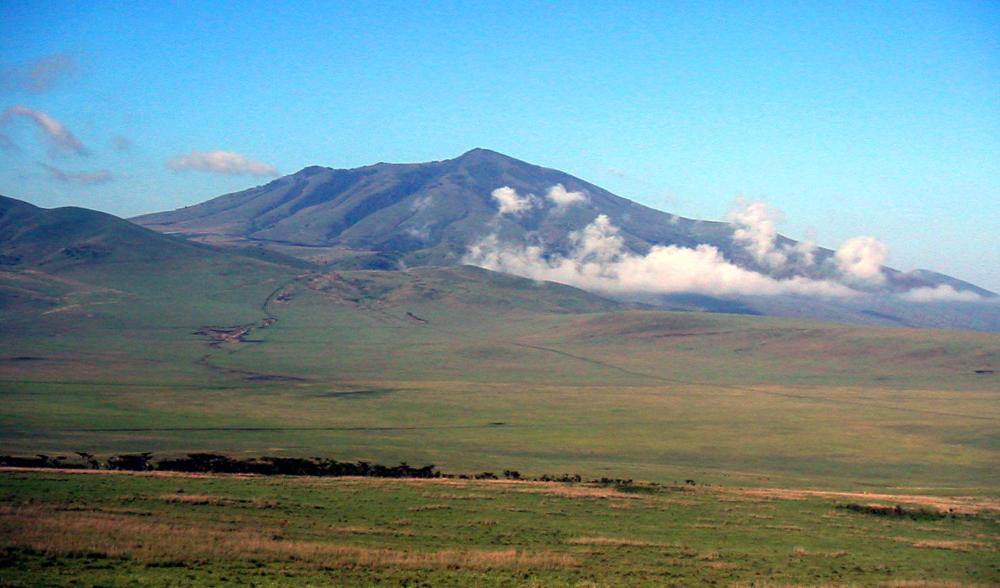
| Olduvai Gorge, Tanzania |
| In the parking lot, our guide told us to look down at our feet. Dozens of dung beetles were rolling balls of dung around. It was amusing to watch. The dung beetles are quite large, and it turns out they can fly. We didn’t find that quite so amusing since they kept blundering into our van over the next few hours. They would whack into us or into a seat cushion, then lie upside down on the van floor, wiggling their legs feebly, unable to get righted. We kept whisking them out the door. These are the things they don’t tell you in the glossy safari brochures! |
| Welcome to the seat of humanity! This is where it all began -- which makes it one of the most important prehistoric sites in the world. Shown above is a cast of the Australopithecus skull Mary Leakey discovered here in the 1950s. |
| Homo habilis bones, a mere 1½ million years old, are also on display, as are tools used by our Stone Age ancestors |
| Once past the crater, the landscape turns to rolling, treeless savannah. Our guide told us the lack of trees is due to the hardpan (volcanic layer) close to the surface, which tree roots can't penetrate. |
| Located within the boundaries of Ngorongoro Conservation Area, it's easy to visit this place on your way between the crater and Serengeti National Park |
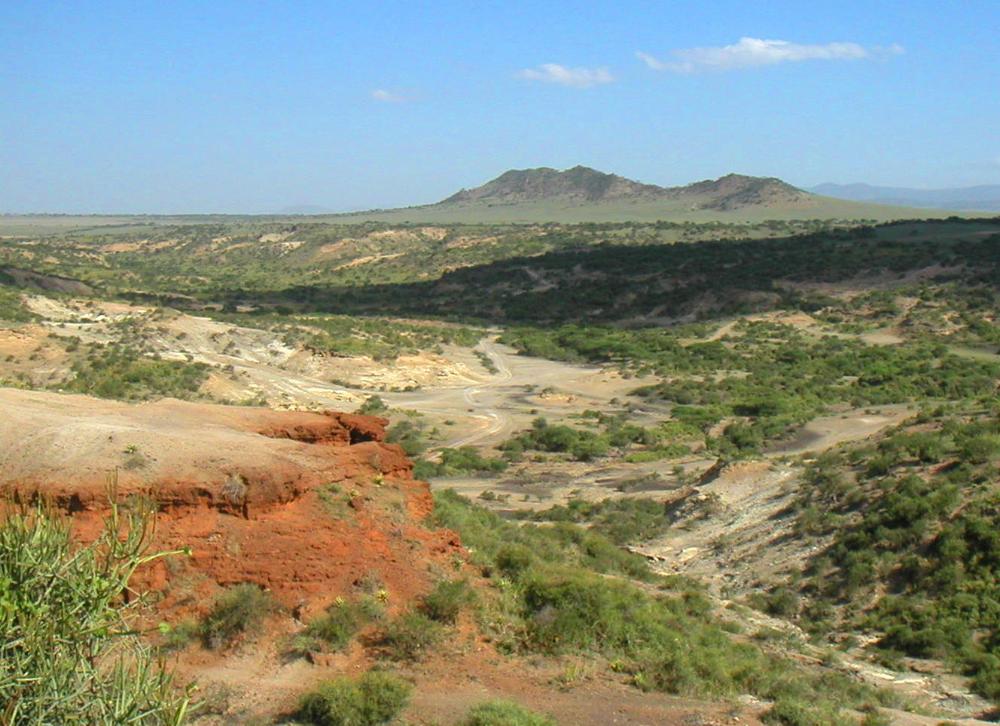
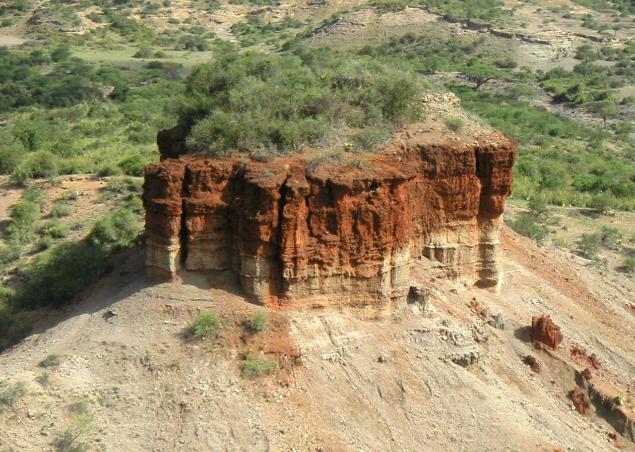
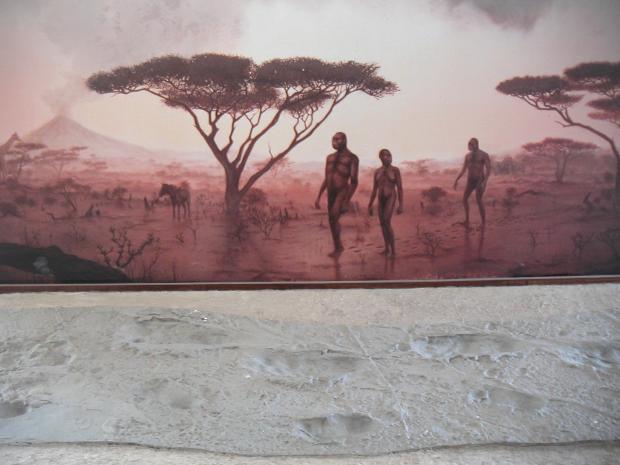
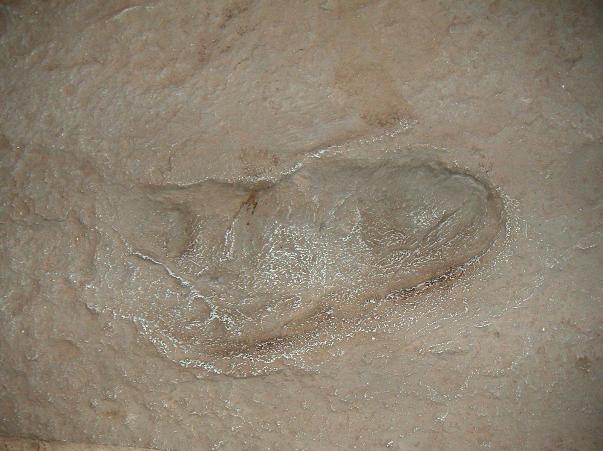
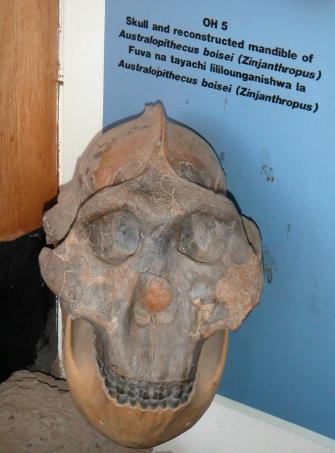
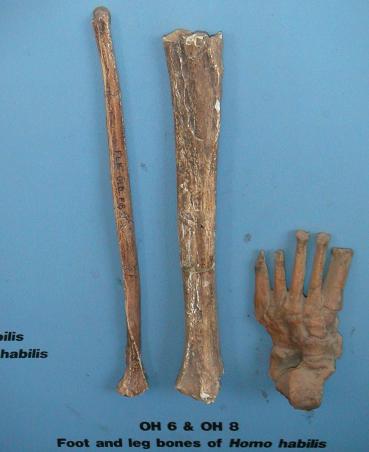
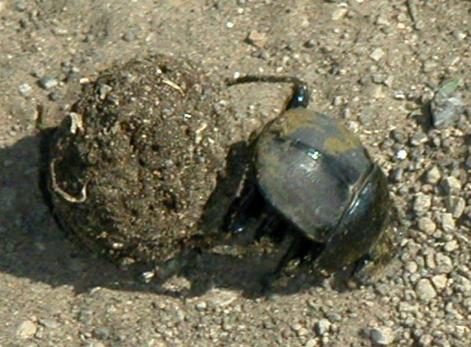
Called the Cradle of Mankind, Olduvai Gorge
features the remains of some of the earliest
hominids ever discovered, as well as a cast of
the Laetoli footprints -- left in volcanic ash 3½
million years ago by our bipedal ancestors. The
gorge is a steep-sided ravine roughly 30 miles
long and 300 feet deep. The land is now semi-
desert, but once there was a lake here bordered
by lush forest. The arrangement of fossils found
here suggests people lived in small camps and
hunted more than 2 million years ago. It seems
likely that from this cradle in Africa mankind
spread out to populate the rest of Earth.
We attended a short talk by a guide who pointed
out the strata of rock in which various hominid
fossils have been found -- the oldest dating
back 3½ million years. The museum includes a
cast of the Australopithecus skull found in the
gorge by Mary Leakey, as well as a cast of the
Laetoli footprints -- perhaps the earliest signs of
mankind in the world. The three separate tracks
are clearly bipedal, but judging from their size,
the hominids were quite a bit smaller than we
are today -- only about 3 feet (1.2 m) tall. They
were small-brained but already walking upright.
features the remains of some of the earliest
hominids ever discovered, as well as a cast of
the Laetoli footprints -- left in volcanic ash 3½
million years ago by our bipedal ancestors. The
gorge is a steep-sided ravine roughly 30 miles
long and 300 feet deep. The land is now semi-
desert, but once there was a lake here bordered
by lush forest. The arrangement of fossils found
here suggests people lived in small camps and
hunted more than 2 million years ago. It seems
likely that from this cradle in Africa mankind
spread out to populate the rest of Earth.
We attended a short talk by a guide who pointed
out the strata of rock in which various hominid
fossils have been found -- the oldest dating
back 3½ million years. The museum includes a
cast of the Australopithecus skull found in the
gorge by Mary Leakey, as well as a cast of the
Laetoli footprints -- perhaps the earliest signs of
mankind in the world. The three separate tracks
are clearly bipedal, but judging from their size,
the hominids were quite a bit smaller than we
are today -- only about 3 feet (1.2 m) tall. They
were small-brained but already walking upright.
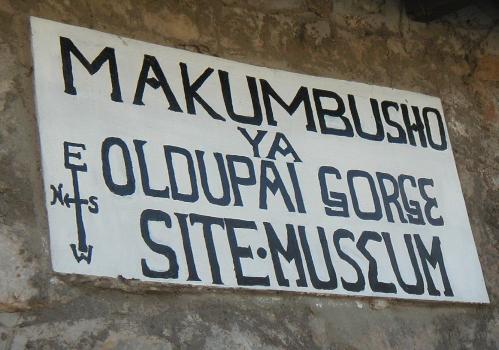
| A closeup of one of the Laotoli footprints shows just how human our ancient hominid ancestors were |
| The museum at Olduvai Gorge includes a cast of the famous Laetoli footprints |